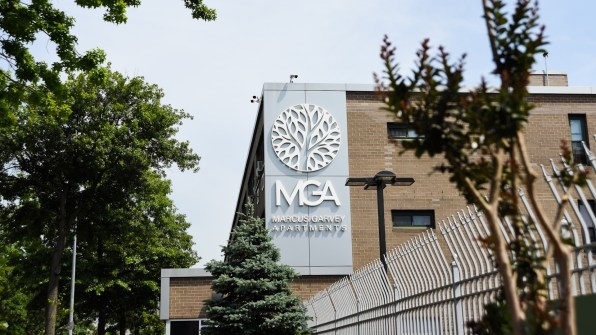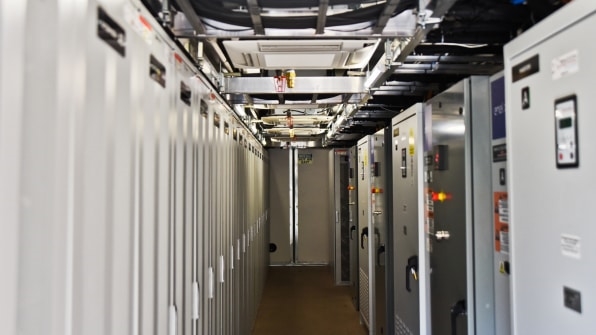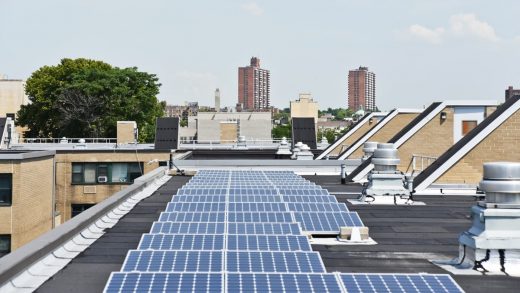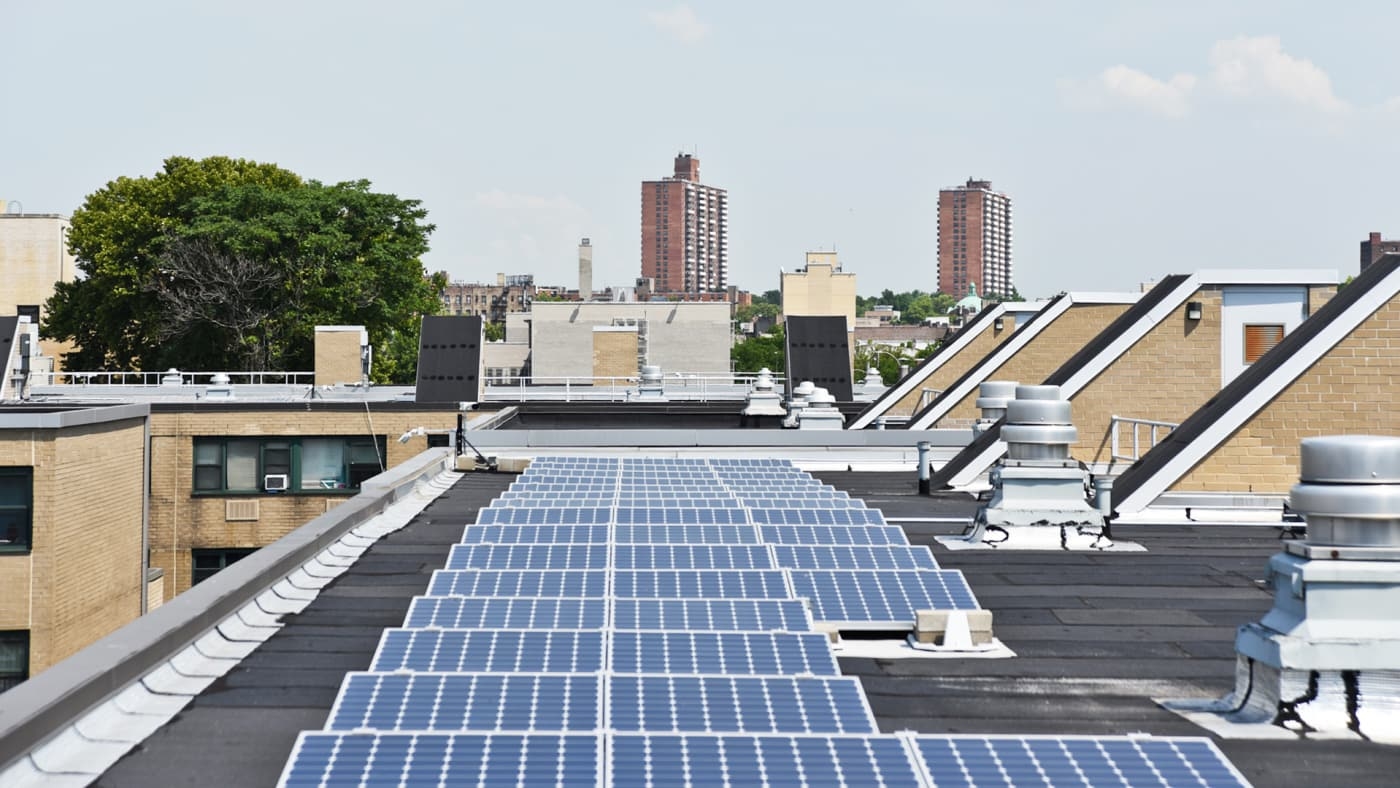This apartment complex’s microgrid is a lesson in urban resilience
In 2014, New York City’s energy utility, Consolidated Edison, realized was facing a looming problem. In just a matter of years, demand for power would outstrip what the electrical grid could provide. Especially in parts of Brooklyn and Queens where populations were once smaller and more spread out, ConEd’s energy systems were not designed to support and distribute large amounts of power, the need for which will only increase as climate change makes summers hotter and winters more unpredictable. This year, ConEd estimates that its substation in Brownsville, which serves parts of Brooklyn and Queens, will deal with an energy demand 69 megawatts beyond what it can safely provide.
The traditional fix for this quandary would just be to add another energy substation to the grid. But that would do little to curb fossil fuel dependency–a goal of both New York City and state–and it would replicate the same type of energy system that failed dramatically across the city during Superstorm Sandy, a climate event likely to occur again at some point in the region. And a new substation would cost around $1.2 billion to build.
So instead, ConEd put out a call for smaller-scale energy projects that could alleviate some of the demand from the struggling Brooklyn-Queens grid. The initiative, called Brooklyn-Queens Demand Management, asks commercial, residential, and industrial customers within the Brownsville substation’s area to propose ways to reduce their grid energy needs. To get the projects off the ground, ConEd set aside $200 million in funding.

While some of the projects involve upgrades like more efficient lighting and better building weatherization to cut energy costs, a microgrid project at the Marcus Garvey Village apartments, an affordable housing complex in Brownsville, Brooklyn, provides a model for how cities can integrate localized energy projects to boost affordability and create resiliency.
Last June, L&M Development Partners, which bought and renovated the Marcus Garvey Village apartments in 2014, unveiled its innovative microgrid system–the first for any multi-family residential development in New York City. The entire project contains 400 kilowatts of rooftop solar, a 400 kilowatt natural-gas fuel cell, and a battery system that can store up to 1,200 kilowatt-hours of energy.
On the property, the upgrades are unobtrusive. The fuel cell is stored in the main control room, the rooftop solar glints in the view from the elevated subway tracks that bisect the development, and the battery–stored in a shipping-container-like structure–is tucked next to a row of apartments. An open space next to the apartment complex’s main office was under consideration for the new ConEd substation; it’s now a playground for kids.
Even though the microgrid system is all but invisible, it’s making an impact on the property. Energy demand for the whole apartment complex, which spans eight city blocks and 625 residential units, peaks at around 1.5 megawatts in the summer, and three megawatts in the winter. The microgrid system can generate and distribute around 1.1 megawatts of power, and for any additional energy needs, it can tap back into the grid. But for the most part, says Nick Lombardi, project lead for the energy company Enel X, which developed the Marcus Garvey microgrid, the project is designed to sustain the whole housing development by relying on the grid as little as possible. And as an added bonus, ConEd pays the Marcus Garvey Village for using its own energy during times of extreme energy consumption and grid activity, like during a heat wave.

While rooftop solar is growing in popularity as a way to lower a property’s energy costs, the microgrid setup–which entails linking alternative energy sources like solar to battery storage–is what enables a property to operate independently of the grid should it need to. This ability, Lombardi says, can alleviate pressure off the grid, and create a pocket of sustainable resiliency in the midst of a city that badly needs examples of how that can be done.
The whole property operates under one central energy meter. A switchboard both connects the property to the main ConEd grid, and manages energy distribution from its microgrid resources. So in the event of a major, grid-disrupting event like Superstorm Sandy, the Marcus Garvey Village will be able to disconnect entirely from the grid, and go into what Enel X refers to as “island mode,” where the microgrid resources, like battery storage, act as the sole source of power. For instances like this, Marcus Garvey Village property management and Enel X laid out a plan to keep energy resources flowing to the development’s community center and central offices, where people will be able to go to charge electronics and cook in good lighting and humane temperatures. Enel X estimates that the microgrid could supply enough power to the development’s community center and main offices to last five days, without any assist from the grid.
For ConEd, the project is a welcome relief. Not only is the microgrid, with a $4 million installation cost, much cheaper than building another substation, it also provides proof-of-concept for other property managers to implement similar types of energy-savings projects to ease the strain on the grid. And for both L&M and the residents of the housing complex, the microgrid keeps energy costs lower and more stable. The community’s monthly power bill has dropped by 15 to 20%, because they have to rely less on ConEd. It also gives them the peace of mind that during a disaster or an electrical failure, they won’t be stranded without energy resources (in Puerto Rico, solar microgrids helped some homes access energy even during the last year’s storms).
In the year since the microgrid has come online, the city has yet to face an environmental event that’s fundamentally disrupted the grid in the way that Sandy did, but it’s fair to say that it likely will again. As the city and state push property developers to find more efficient ways to power their buildings–and as resources like solar panels and batteries get progressively cheaper–this type of microgrids could become the standard across dense urban environments trying to lighten the burden on their overtaxed grids.
(14)



